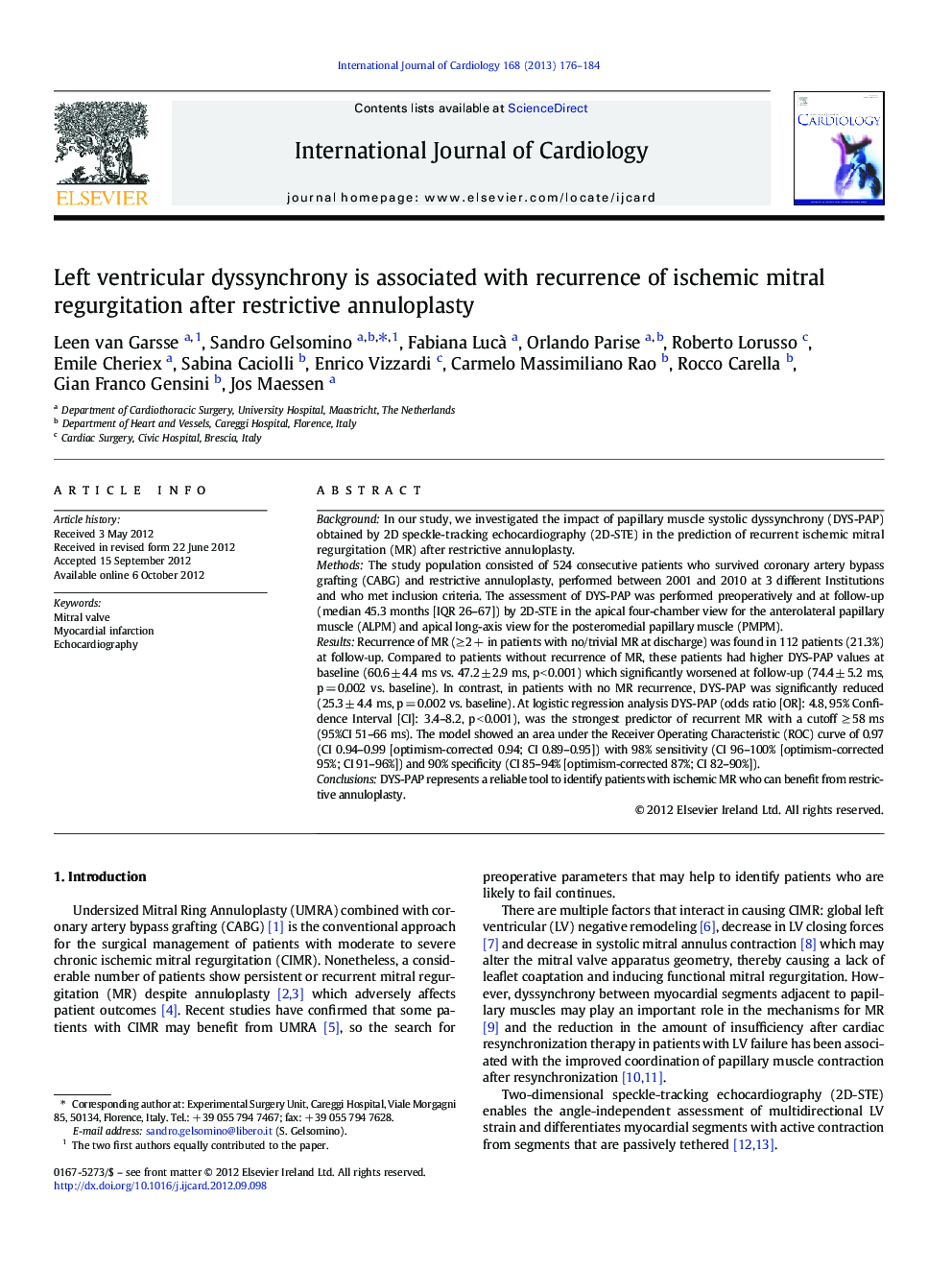| Article ID | Journal | Published Year | Pages | File Type |
|---|---|---|---|---|
| 5976605 | International Journal of Cardiology | 2013 | 9 Pages |
BackgroundIn our study, we investigated the impact of papillary muscle systolic dyssynchrony (DYS-PAP) obtained by 2D speckle-tracking echocardiography (2D-STE) in the prediction of recurrent ischemic mitral regurgitation (MR) after restrictive annuloplasty.MethodsThe study population consisted of 524 consecutive patients who survived coronary artery bypass grafting (CABG) and restrictive annuloplasty, performed between 2001 and 2010 at 3 different Institutions and who met inclusion criteria. The assessment of DYS-PAP was performed preoperatively and at follow-up (median 45.3 months [IQR 26-67]) by 2D-STE in the apical four-chamber view for the anterolateral papillary muscle (ALPM) and apical long-axis view for the posteromedial papillary muscle (PMPM).ResultsRecurrence of MR (â¥Â 2 + in patients with no/trivial MR at discharge) was found in 112 patients (21.3%) at followâup. Compared to patients without recurrence of MR, these patients had higher DYS-PAP values at baseline (60.6 ± 4.4 ms vs. 47.2 ± 2.9 ms, p < 0.001) which significantly worsened at followâup (74.4 ± 5.2 ms, p = 0.002 vs. baseline). In contrast, in patients with no MR recurrence, DYS-PAP was significantly reduced (25.3 ± 4.4 ms, p = 0.002 vs. baseline). At logistic regression analysis DYS-PAP (odds ratio [OR]: 4.8, 95% Confidence Interval [CI]: 3.4-8.2, p < 0.001), was the strongest predictor of recurrent MR with a cutoff â¥Â 58 ms (95%CI 51-66 ms). The model showed an area under the Receiver Operating Characteristic (ROC) curve of 0.97 (CI 0.94-0.99 [optimism-corrected 0.94; CI 0.89-0.95]) with 98% sensitivity (CI 96-100% [optimism-corrected 95%; CI 91-96%]) and 90% specificity (CI 85-94% [optimism-corrected 87%; CI 82-90%]).ConclusionsDYS-PAP represents a reliable tool to identify patients with ischemic MR who can benefit from restrictive annuloplasty.
